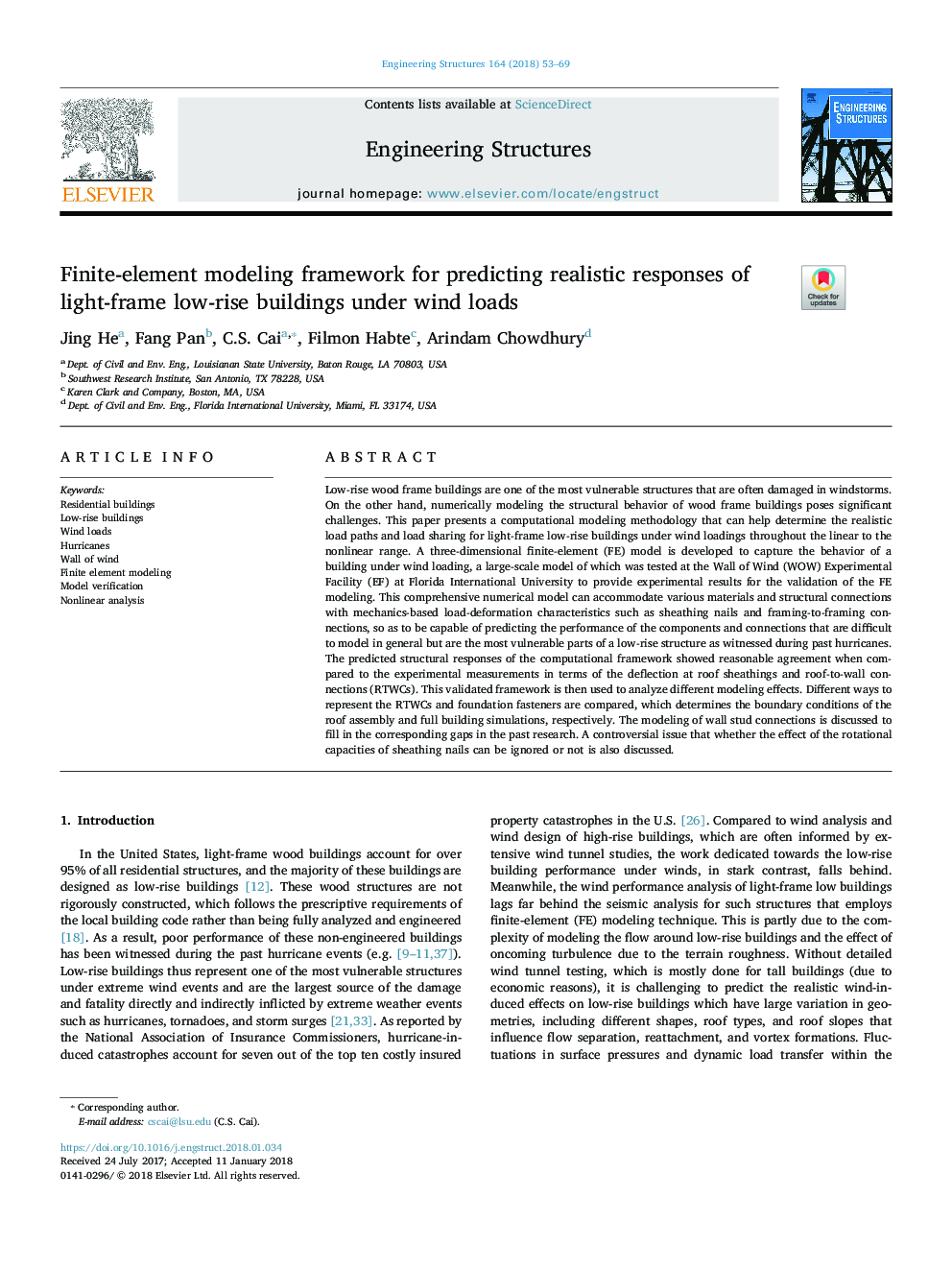| Article ID | Journal | Published Year | Pages | File Type |
|---|---|---|---|---|
| 6737697 | Engineering Structures | 2018 | 17 Pages |
Abstract
Low-rise wood frame buildings are one of the most vulnerable structures that are often damaged in windstorms. On the other hand, numerically modeling the structural behavior of wood frame buildings poses significant challenges. This paper presents a computational modeling methodology that can help determine the realistic load paths and load sharing for light-frame low-rise buildings under wind loadings throughout the linear to the nonlinear range. A three-dimensional finite-element (FE) model is developed to capture the behavior of a building under wind loading, a large-scale model of which was tested at the Wall of Wind (WOW) Experimental Facility (EF) at Florida International University to provide experimental results for the validation of the FE modeling. This comprehensive numerical model can accommodate various materials and structural connections with mechanics-based load-deformation characteristics such as sheathing nails and framing-to-framing connections, so as to be capable of predicting the performance of the components and connections that are difficult to model in general but are the most vulnerable parts of a low-rise structure as witnessed during past hurricanes. The predicted structural responses of the computational framework showed reasonable agreement when compared to the experimental measurements in terms of the deflection at roof sheathings and roof-to-wall connections (RTWCs). This validated framework is then used to analyze different modeling effects. Different ways to represent the RTWCs and foundation fasteners are compared, which determines the boundary conditions of the roof assembly and full building simulations, respectively. The modeling of wall stud connections is discussed to fill in the corresponding gaps in the past research. A controversial issue that whether the effect of the rotational capacities of sheathing nails can be ignored or not is also discussed.
Keywords
Related Topics
Physical Sciences and Engineering
Earth and Planetary Sciences
Geotechnical Engineering and Engineering Geology
Authors
Jing He, Fang Pan, C.S. Cai, Filmon Habte, Arindam Chowdhury,
